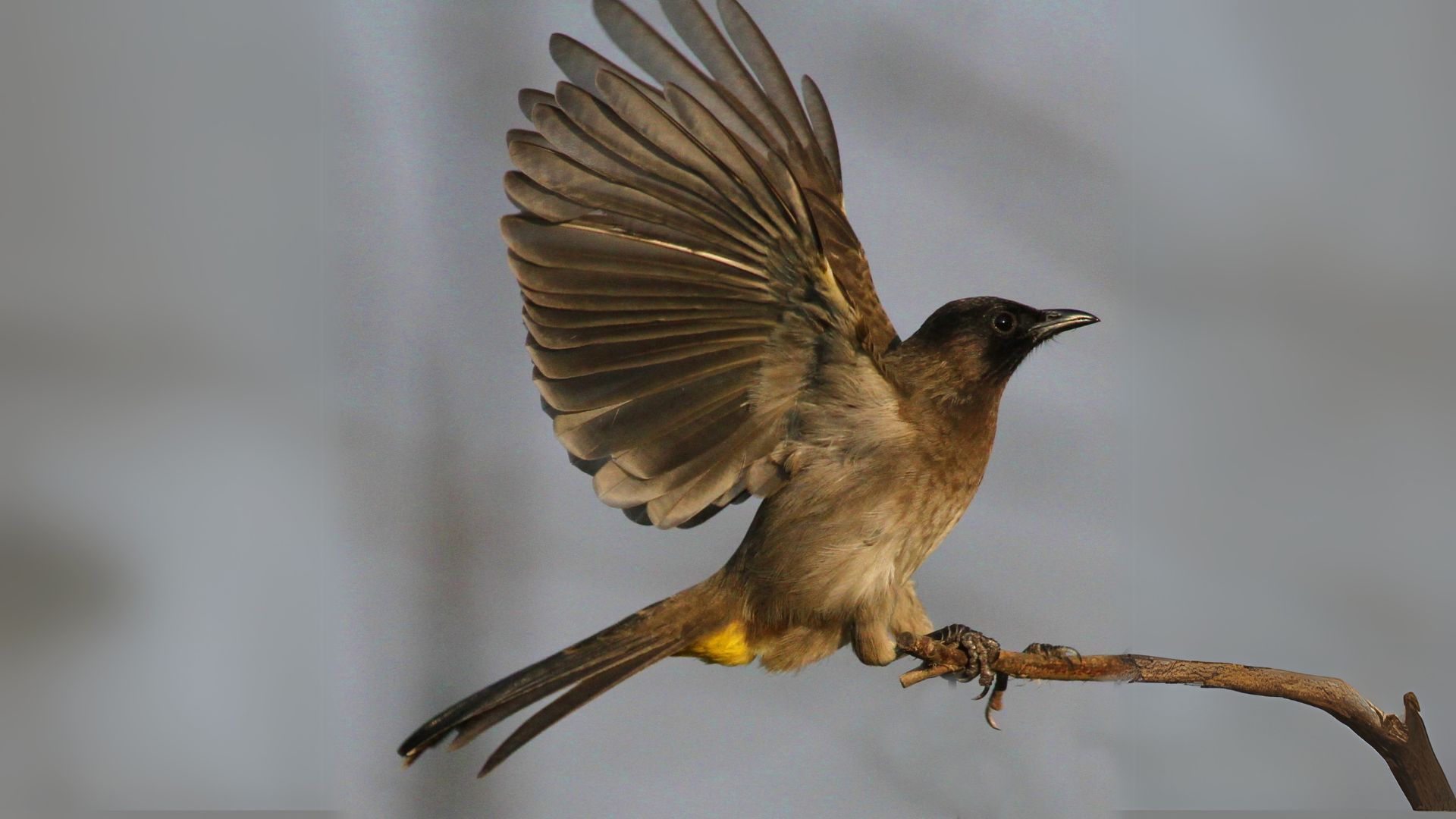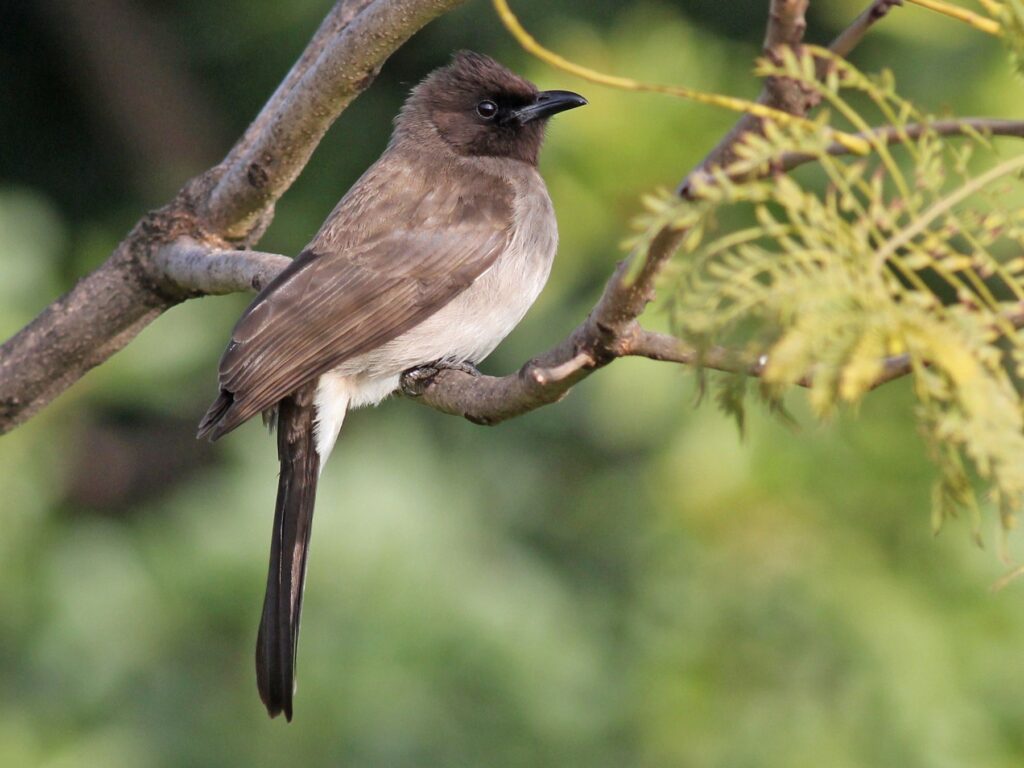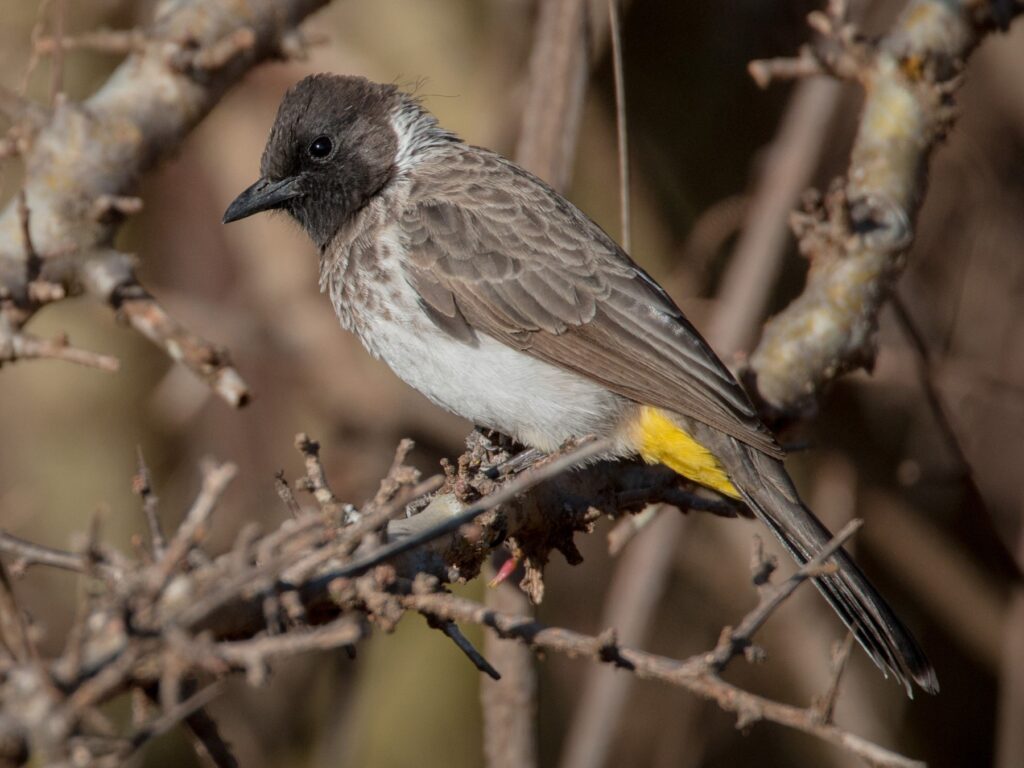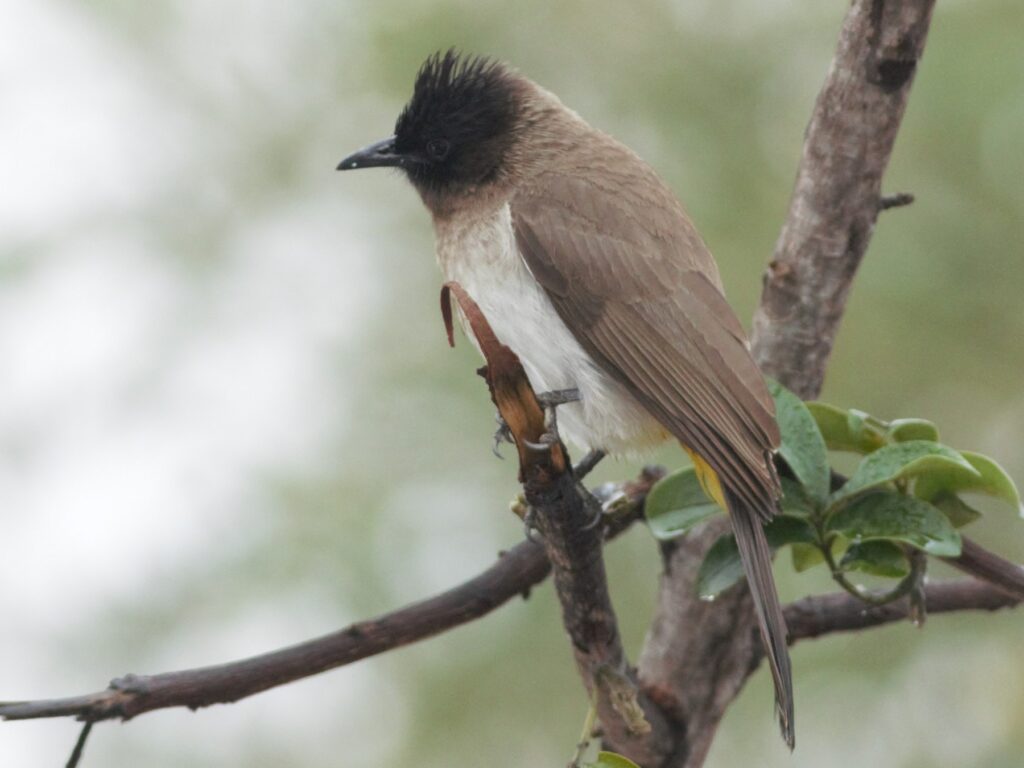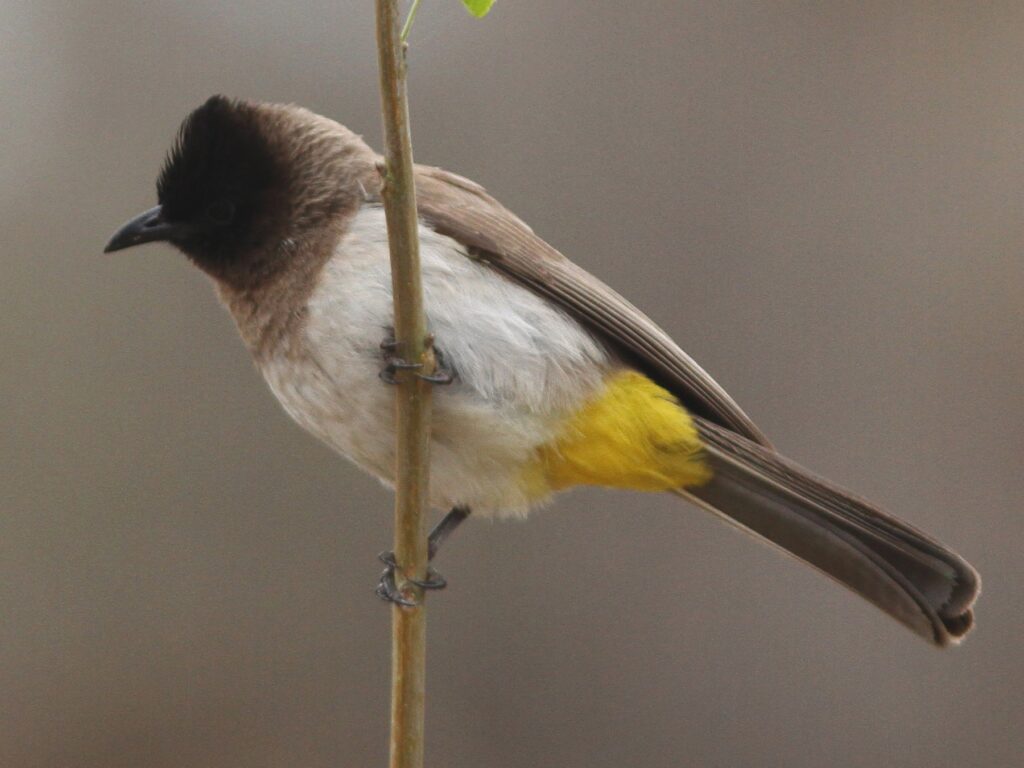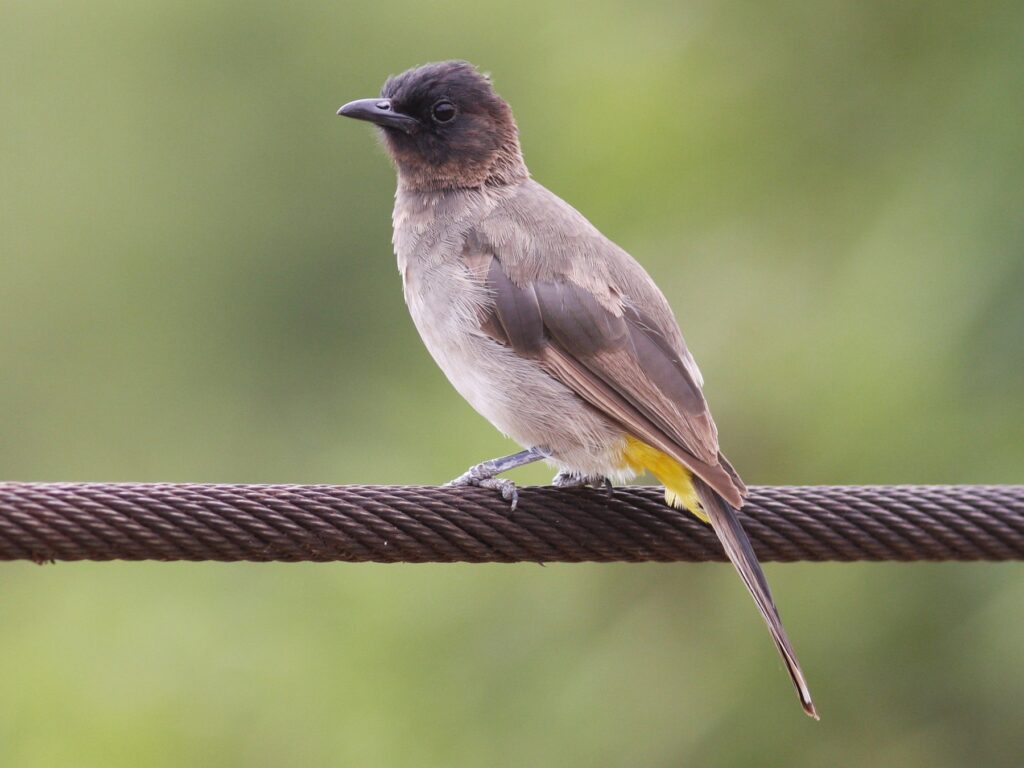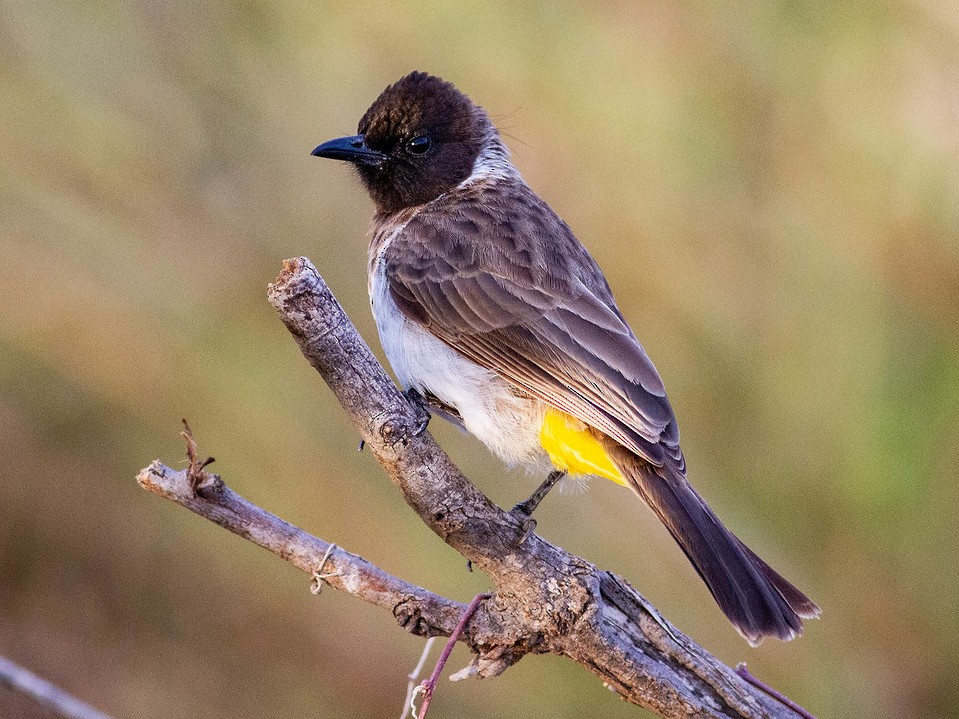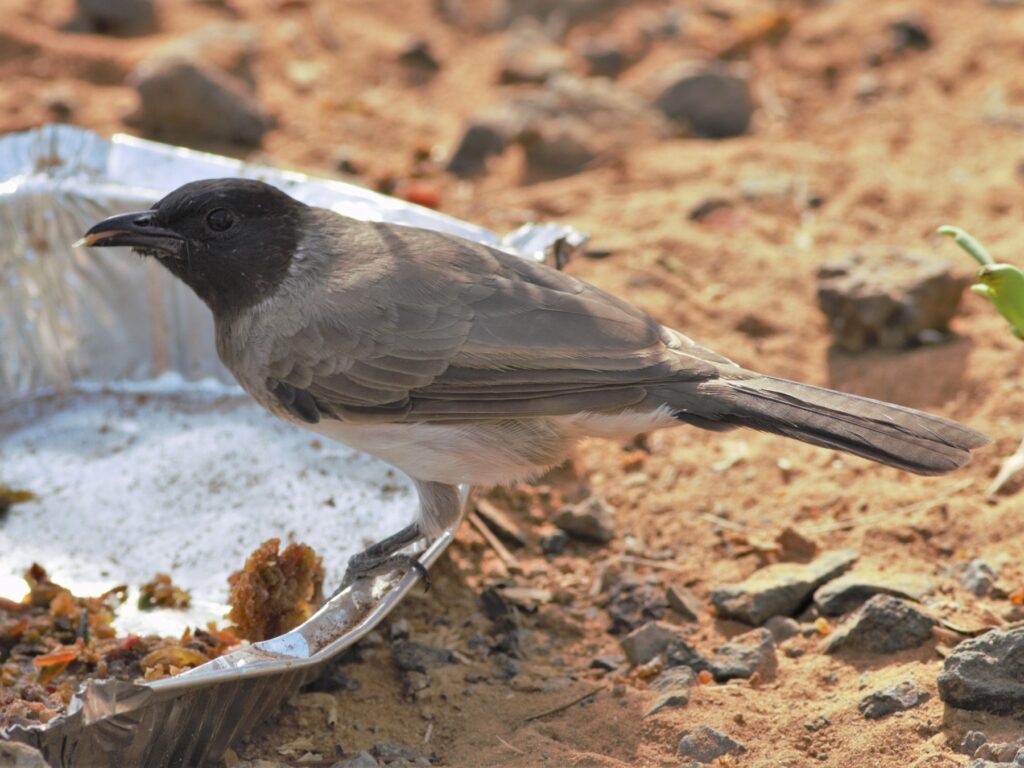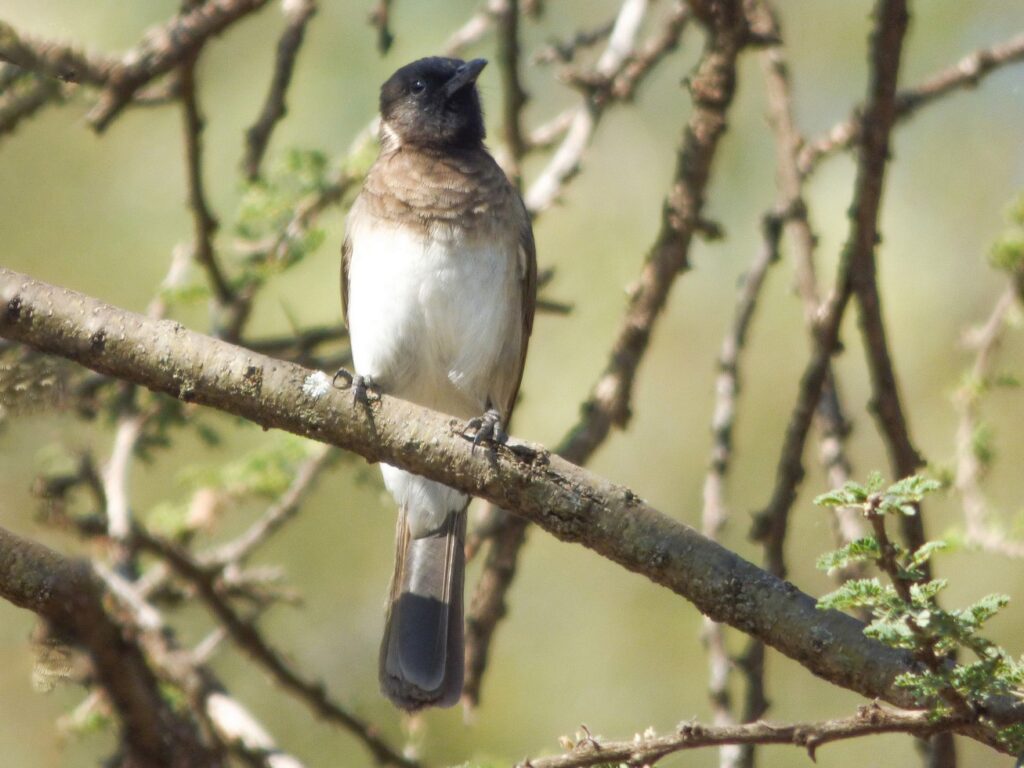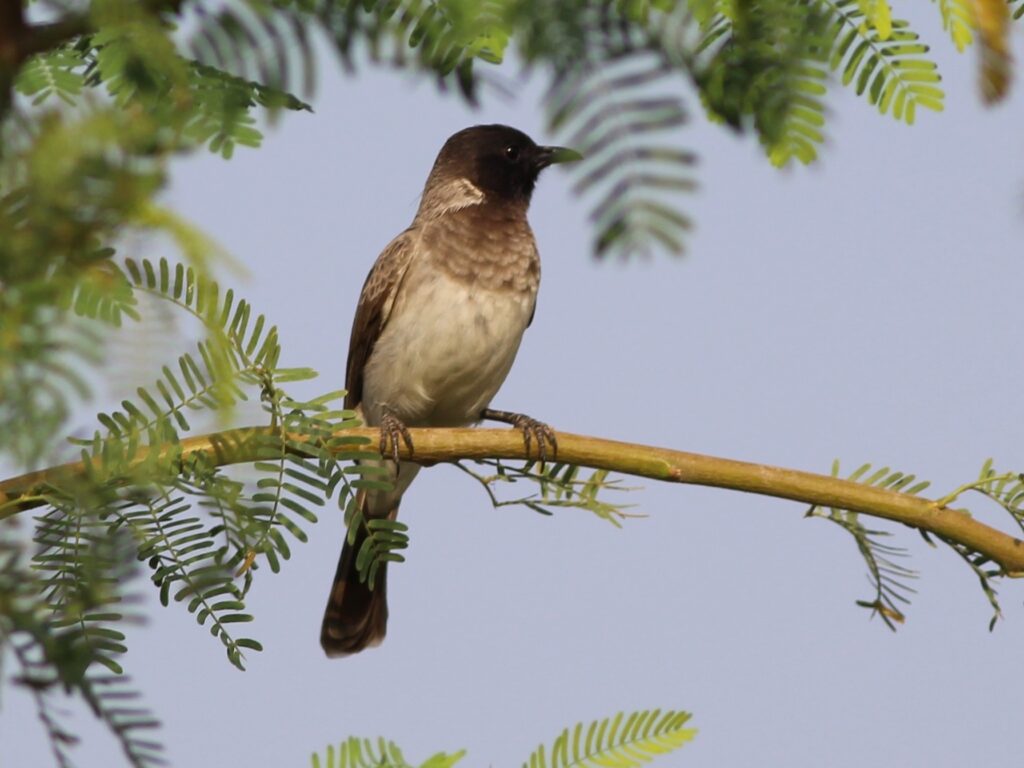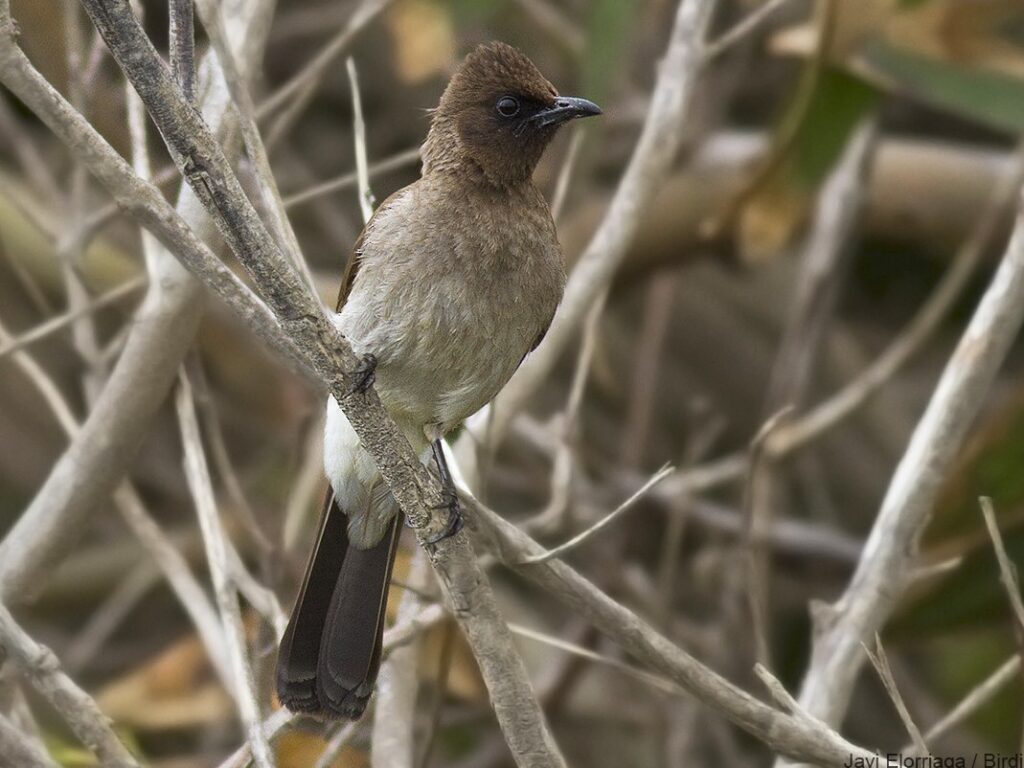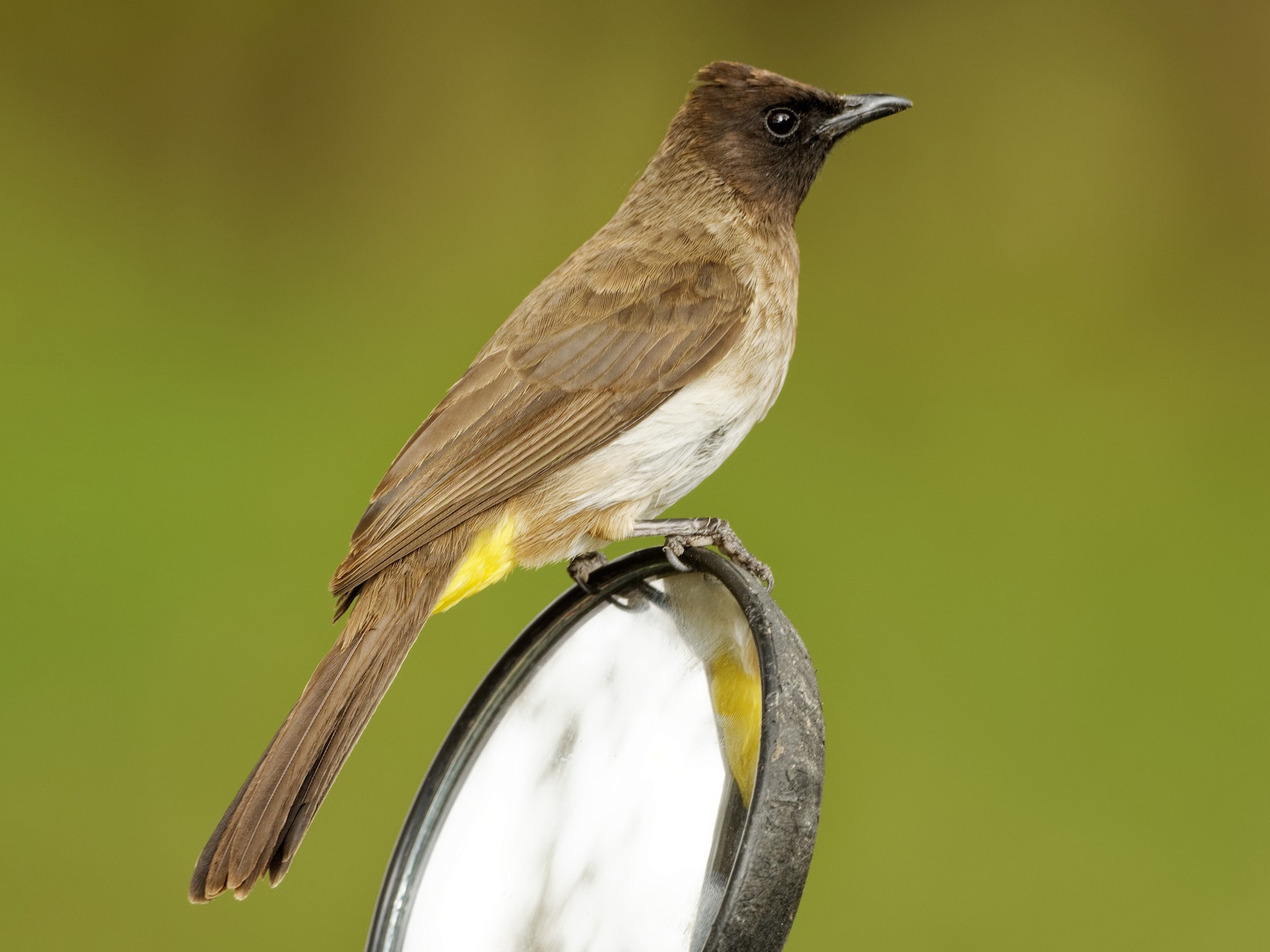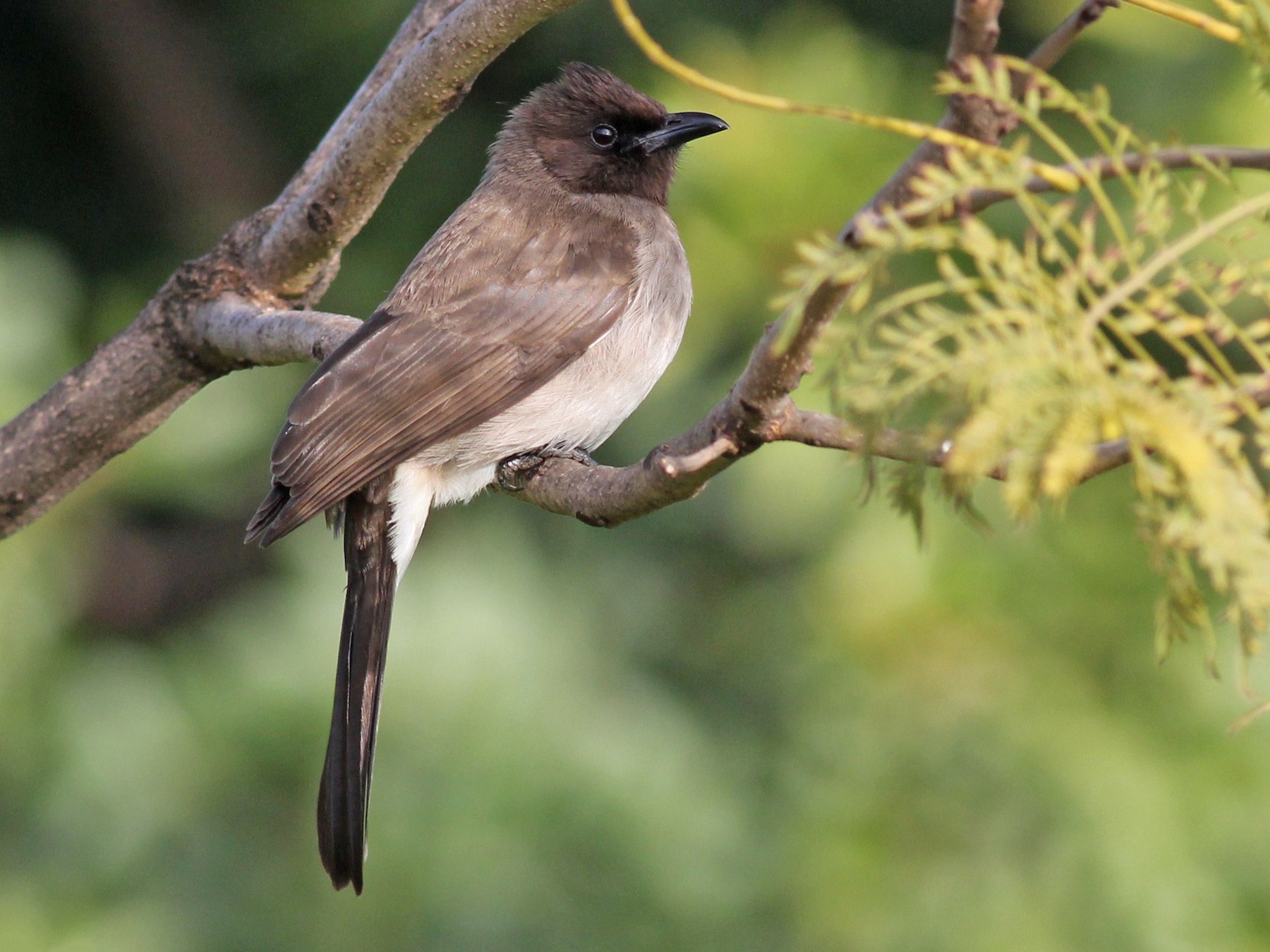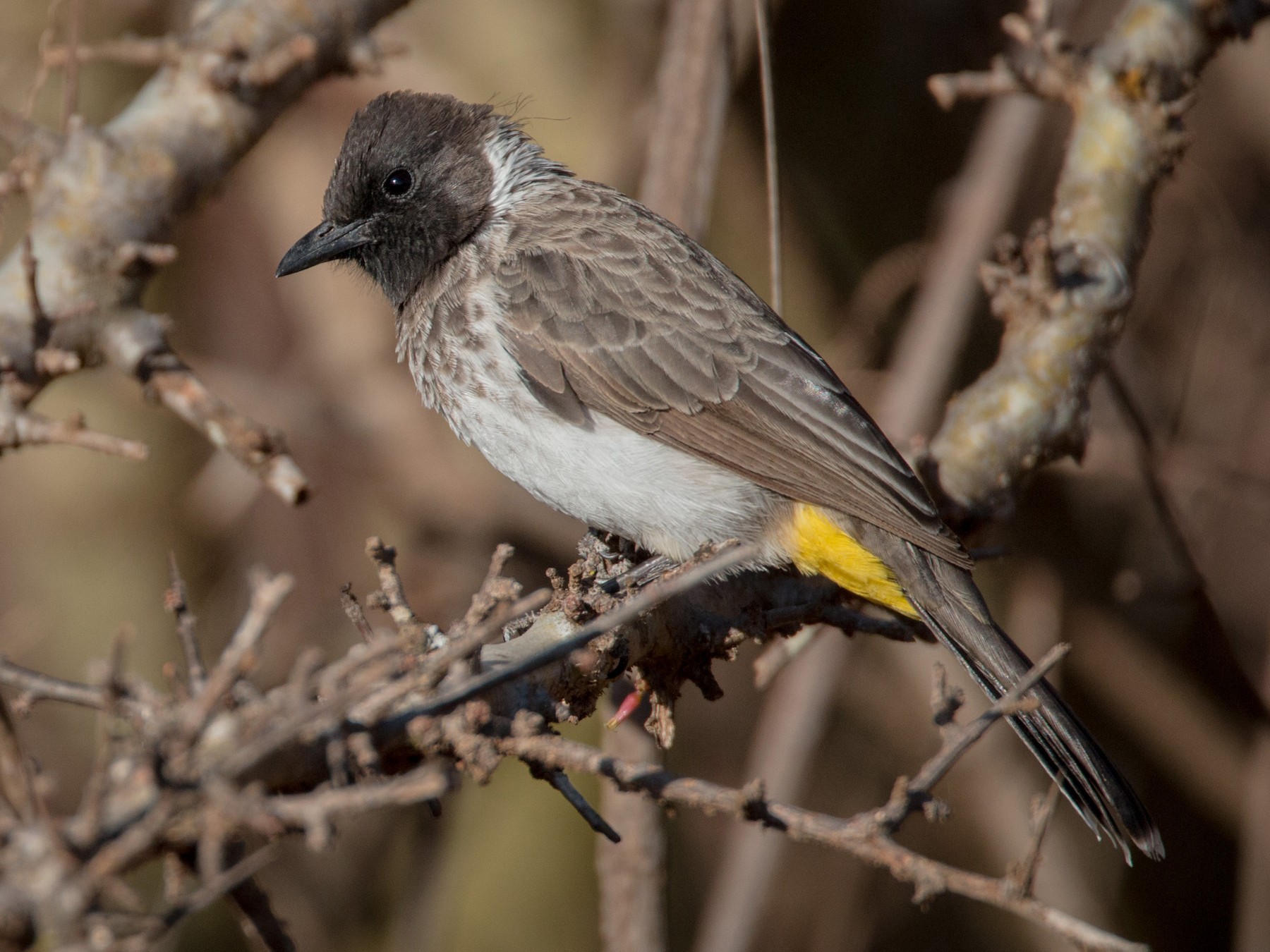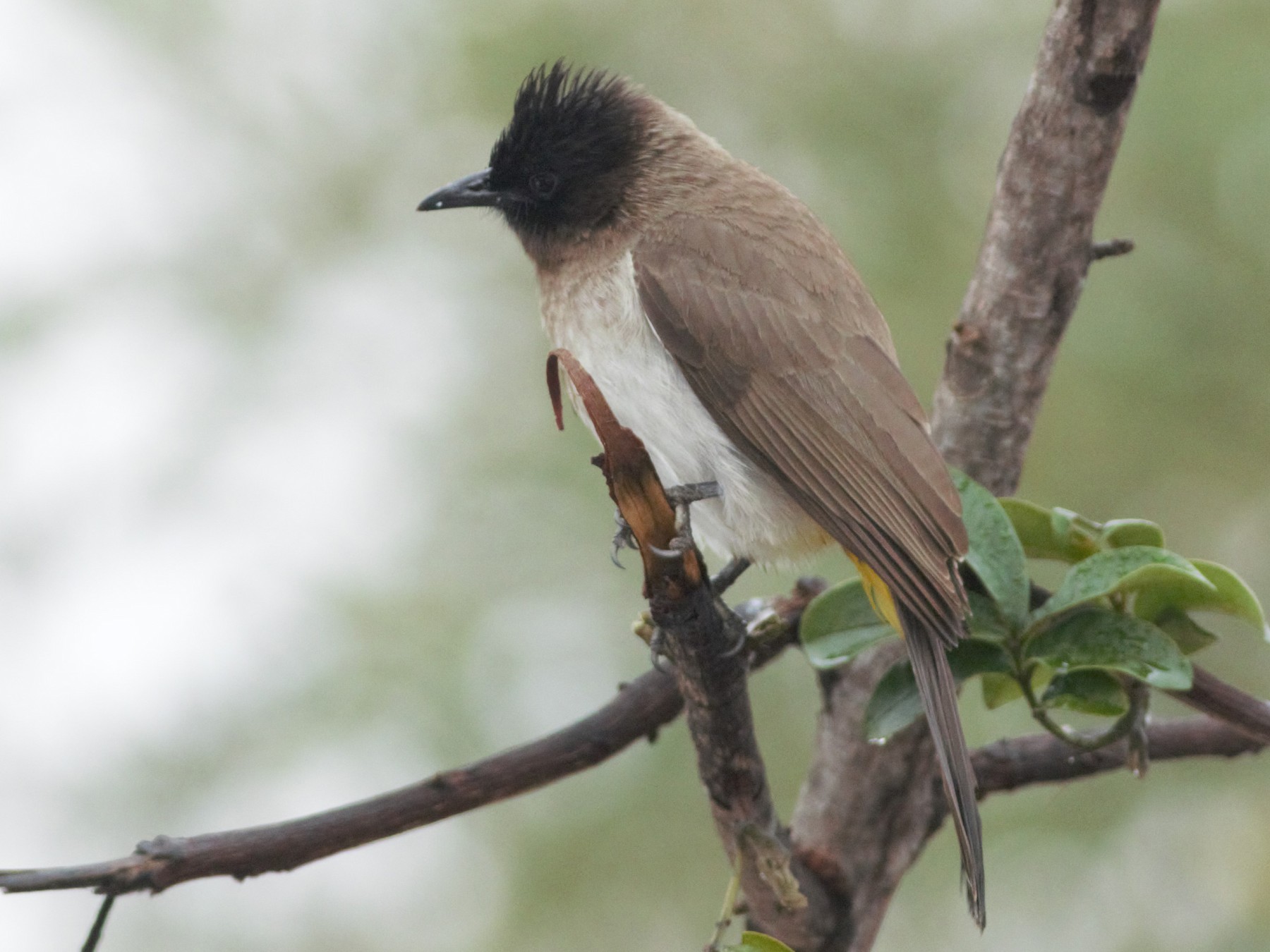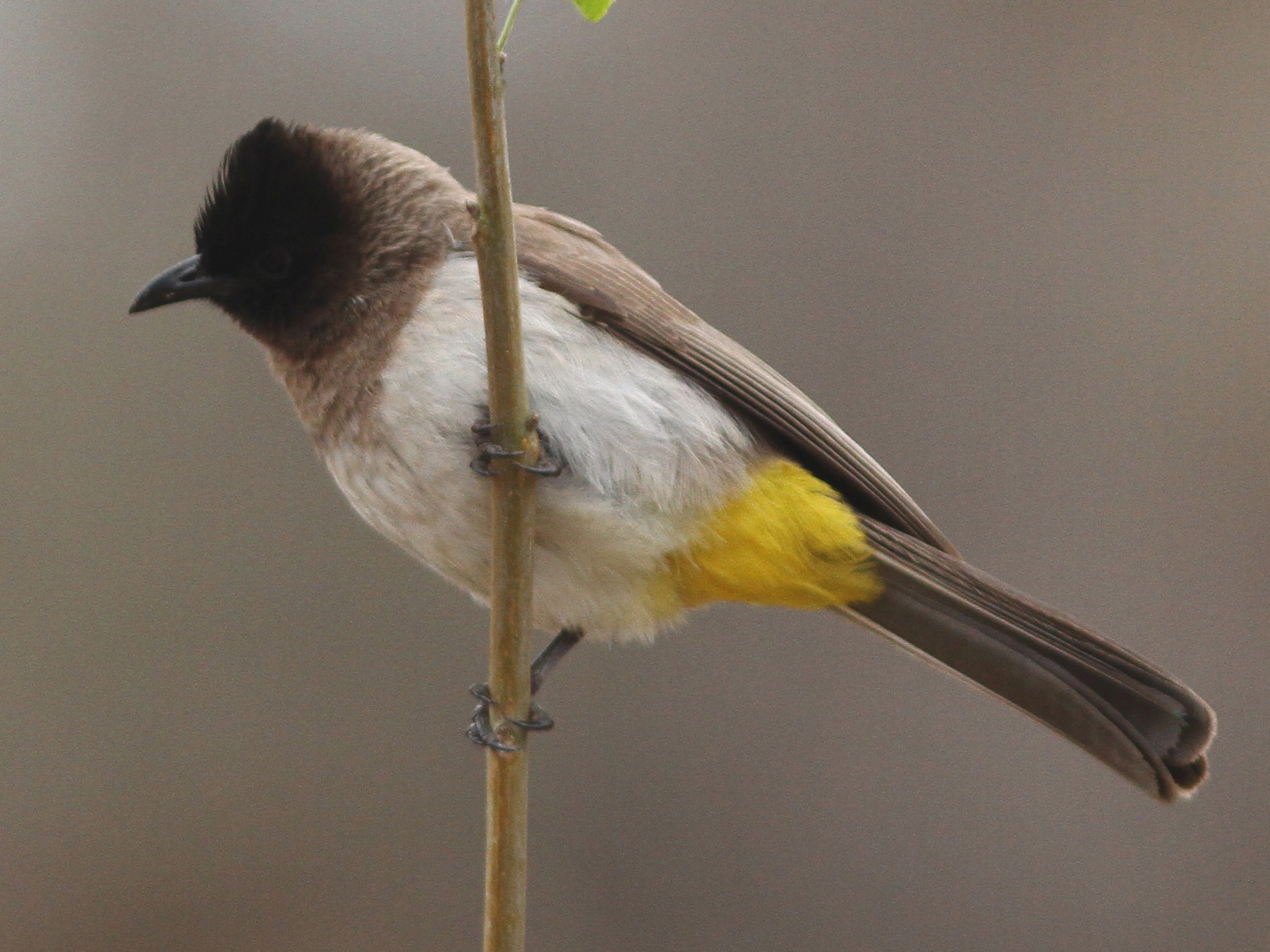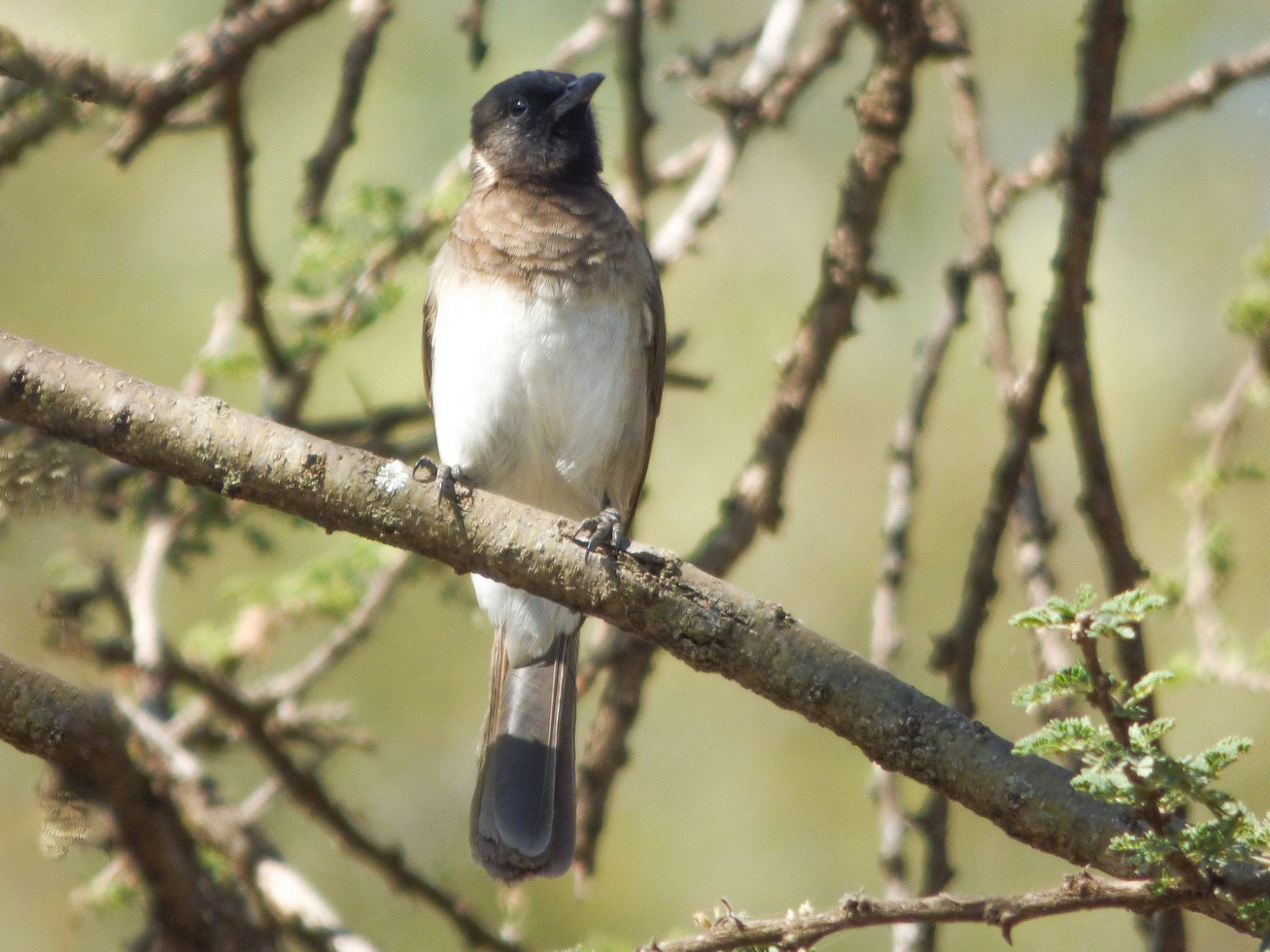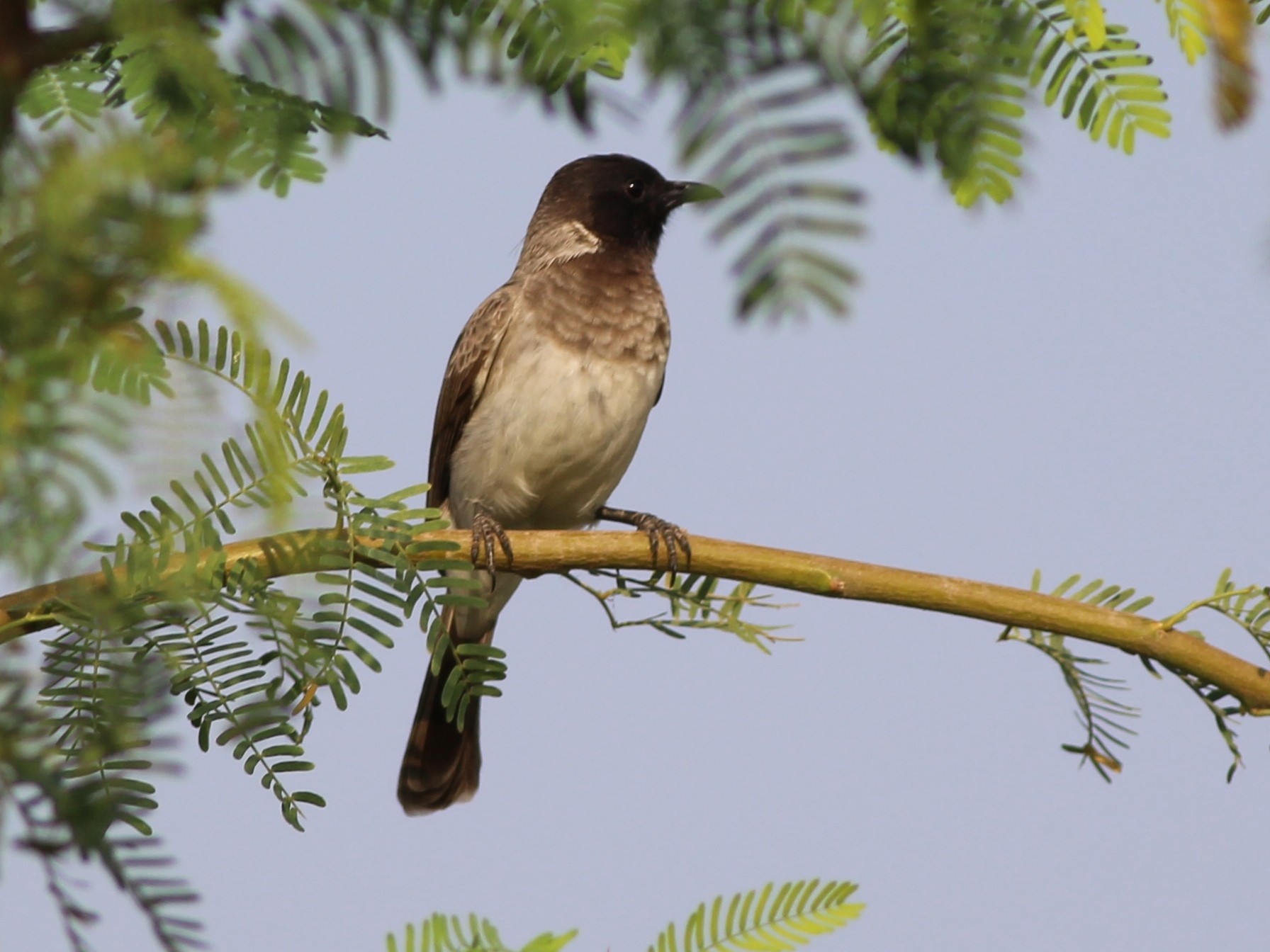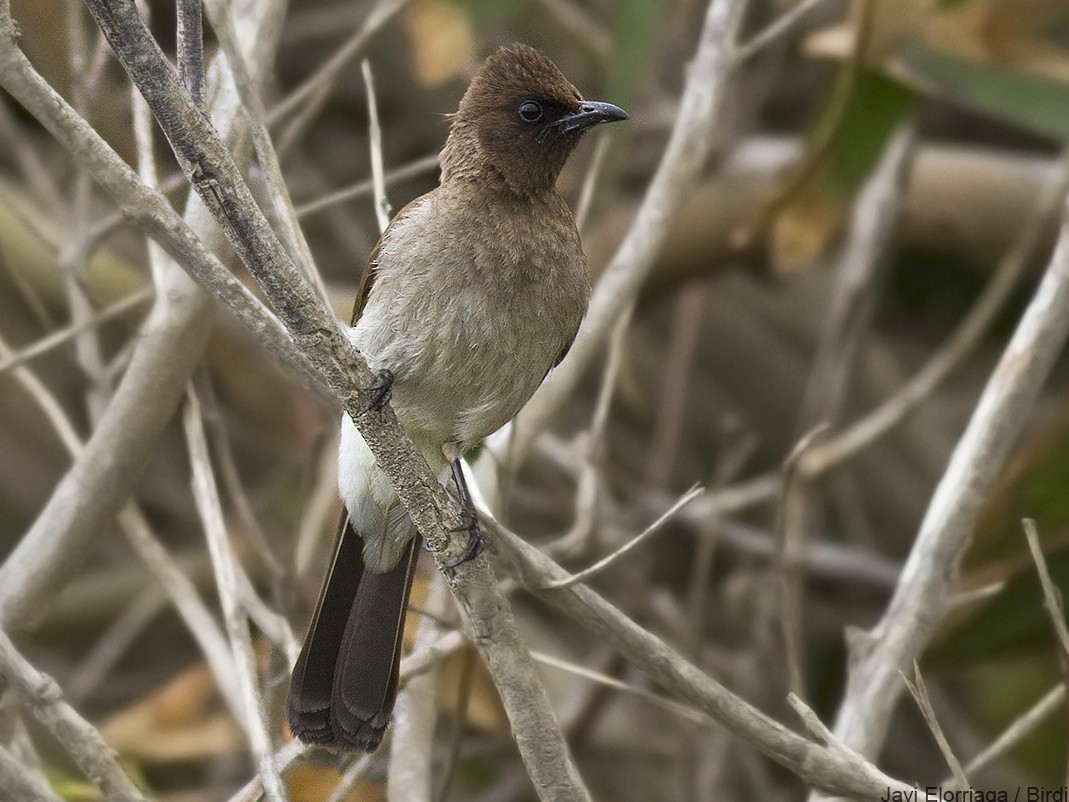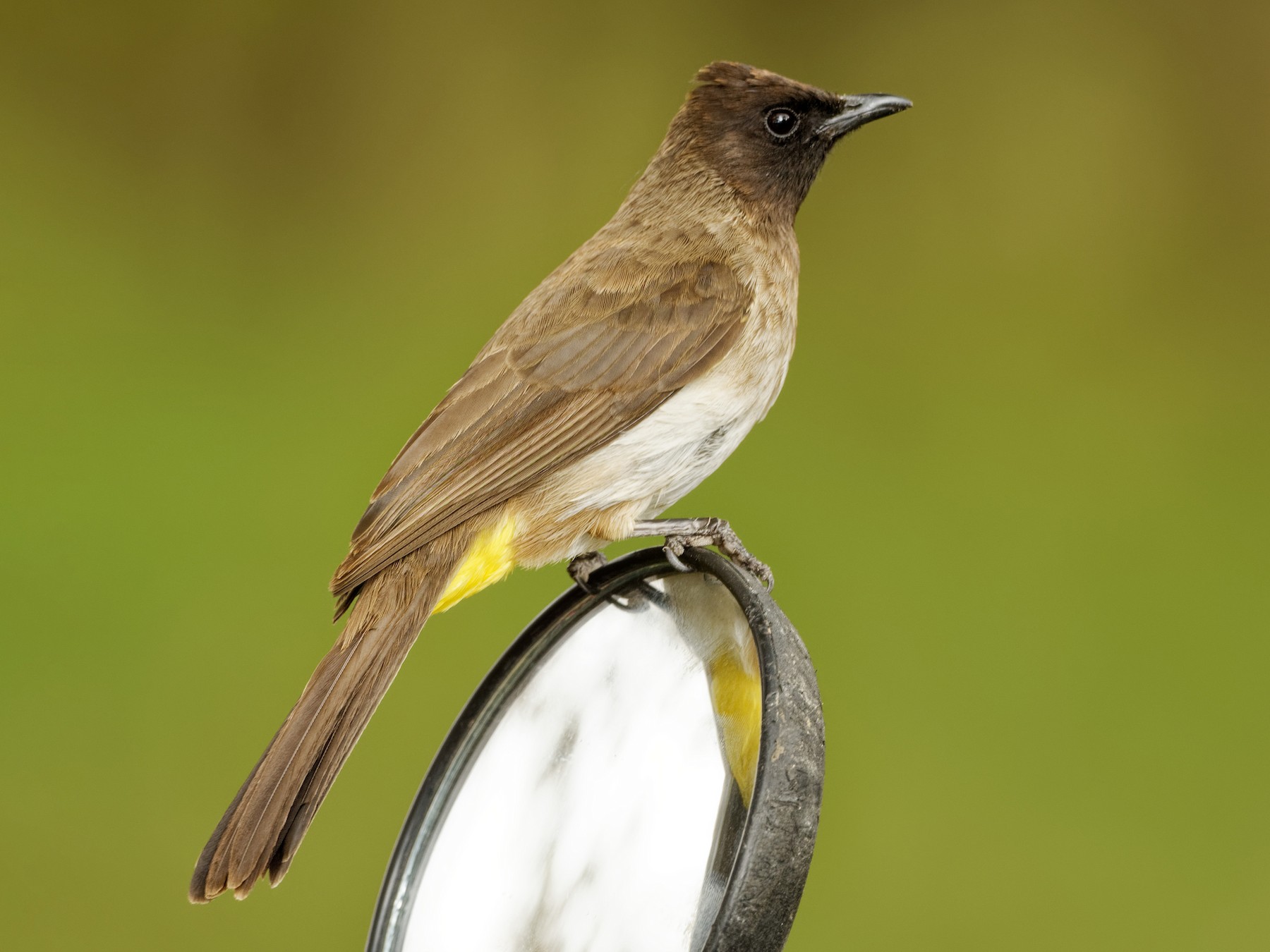Common Bulbul: Fascinating Facts and Unique Behaviors of This Lively Songbird
The common bulbul is a small, lively bird found in gardens, parks, and forests across parts of Asia and Africa. You’ll notice its cheerful calls and adaptability right away—this songbird stands out with its rounded body, medium tail, and dusky coloring.
Birdwatchers often spot them darting around, full of energy, and they seem to thrive on social interactions. If you’re curious about why they’re so competitive, you might enjoy their social nature.
There are several races of the common bulbul, and their tail tips can be white or not, depending on where you find them. These birds seem to handle city life just fine, often popping up in urban parks and gardens.
If you want to dig deeper into bulbul diversity, there’s more info on bulbul species.
Key Takeaways
- Common bulbuls are widespread and easy to spot in gardens and parks.
- They show different features depending on the region.
- They’re very adaptable to changes in their environment.
Taxonomy and Identification
You’ll find Common Bulbuls throughout Africa and parts of the Middle East. They have a few traits that make them pretty easy to pick out from other birds in their range.
Scientific Classification
The Common Bulbul goes by the scientific name Pycnonotus barbatus. It’s part of the bulbul family (Pycnonotidae), which is a big group—over 150 species, actually.
Across its wide range, the Common Bulbul splits into several subspecies. Each has its own twist on plumage and calls, shaped by geography.
Some experts have suggested splitting certain populations into separate species, like Dodson’s Bulbul. For now, though, most people just call them subspecies.
Classification Table:
| Taxonomic Rank | Name |
|---|---|
| Kingdom | Animalia |
| Phylum | Chordata |
| Class | Aves |
| Order | Passeriformes |
| Family | Pycnonotidae |
| Genus | Pycnonotus |
| Species | P. barbatus |
Physical Characteristics
The Common Bulbul is a medium-sized songbird, usually measuring about 18–20 cm long. Its upperparts are mostly brownish or olive, while the underparts look paler.
You’ll notice a darker head, a short crest, and sometimes a pretty clear dark eye-ring. Its vent, or undertail coverts, are often bright yellow—a dead giveaway if you see one flick its tail.
The bill curves slightly and is black. Males and females look almost identical, but young birds come across a bit duller.
Similar Species
A handful of bulbul species look a lot like the Common Bulbul. Other bulbul family members, like the White-spectacled Bulbul and Yellow-vented Bulbul, can trip up even seasoned birders.
In some places, Dodson’s Bulbul overlaps with the Common Bulbul. The differences are subtle—maybe a slightly different head color, or a yellow vent that’s more or less obvious.
If you’re trying to tell them apart, look for the Common Bulbul’s size, plain belly, dark head, and that signature yellow vent. Their songs and calls can also clue you in, especially if you’re familiar with local species.
Distribution and Habitat
Common Bulbuls pop up all across Africa and seem pretty comfortable in all sorts of places. Geography and the right habitats—think forests, gardens, and shrubby spots—shape where you’ll find them.
Geographic Range
You’ll see Common Bulbuls in sub-Saharan Africa, from Ethiopia to Kenya, Tanzania, and a bunch of other countries in East, Central, and West Africa. They show up in both urban and rural areas, often hanging out near people.
You won’t find them in arid deserts or dense forests, but they’re a regular sight in open woodland, farmland, and city parks. While the Common Bulbul is mainly African, other bulbul species have made their mark in Asia—there’s a market prevalence study in Indonesia if you’re interested.
These birds usually stay put year-round and don’t migrate.
Preferred Habitats
Common Bulbuls really aren’t picky. They turn up in open forests, bushland, gardens, and places where people live.
They like dense shrubs or thickets for shelter and nesting, but in cities, you’ll often spot them in parks, gardens, or even along the roadside. In the wild, they stick to forest edges, wooded savannas, and riverbanks.
Some research points out that they often use bamboo patches and thick vegetation, especially near water. Their ability to adjust to different habitats helps them do well even in busy urban spots, like common roosting sites in Bangladesh.
Diet and Feeding Behavior
Common Bulbuls eat just about anything, and they’re quick to switch up their diet if the situation calls for it. That’s a big part of why they do so well in cities, forests, and everywhere in between.
Primary Food Sources
Fruit is the main staple for Common Bulbuls. They love figs, berries, and papayas, and you’ll catch them raiding gardens and fruit trees if the opportunity arises.
When fruit isn’t around, they go for nectar from flowers, which gives them a sugar boost and plenty of energy. Insects round out the menu, especially for feeding chicks—bulbuls pick bugs off leaves or snatch them mid-air.
Sometimes, they’ll eat seeds or even human scraps if food is scarce. Their ability to eat whatever’s available keeps them going, no matter what. There’s a study on foraging and dietary preference if you want to go deeper.
Common Bulbul Diet Table
| Food Type | Examples | Frequency |
|---|---|---|
| Fruit | Figs, berries | Very common |
| Nectar | Flower nectar | Occasional |
| Insects | Caterpillars, flies | Seasonal/young |
| Others | Seeds, scraps | As needed |
Foraging Techniques
Common Bulbuls don’t just sit around waiting for food. They hop and flit between branches, always on the lookout for ripe fruit or a tasty insect.
They grab fruit straight off the branch or sometimes snatch it in mid-air. For nectar, they poke their bills deep into flowers, and when hunting bugs, they’ll pick them off leaves or chase them in flight.
You’ll often see them foraging in pairs or small groups. This social approach seems to help them find new food sources and keeps them safer from predators.
If you’re curious about their foraging style, check out this bulbul foraging behavior study.
Breeding and Nesting
Common bulbuls have pretty flexible breeding habits and build simple nests. Their nesting process and egg care have caught the attention of bird experts for good reason.
Mating and Breeding Seasons
Common bulbuls usually breed during the warmer months, but the exact timing depends on where they live. In many places, breeding happens from March to September.
Both males and females get in on courtship—you’ll see them fluttering their wings and singing to attract a partner. They tend to form monogamous pairs for the season, and sometimes they raise more than one brood.
Clutch size is usually 2 to 4 eggs. The female sits on the eggs for about 11 to 14 days, while the male helps out with feeding and standing guard.
The whole breeding process, from courtship to fledging, wraps up in just over a month.
Nesting Behavior
Common bulbuls put together small, cup-shaped nests using grasses, roots, leaves, and whatever else is handy—including the occasional bit of human trash. They usually hide nests in shrubs or low trees for some cover.
Both parents gather nesting materials, but the female does most of the building. Eggs show up pale pink or white with reddish-brown spots.
Once the chicks hatch, both parents bring them soft insects and fruit. Fledglings leave the nest about two weeks after hatching.
If you’re into birdwatching or want more tips on nest ID, there’s extra info at birdingcollective.com.
Conservation Status and Importance
Common Bulbuls are everywhere in Africa and parts of Asia. They’re adaptable, and their presence matters to the environment in more ways than you might expect.
Population Trends
Most experts agree that the Common Bulbul has a stable population and isn’t threatened right now. The IUCN lists them as Least Concern because they’re widespread and pretty numerous.
They cope well in gardens, forests, and urban areas, and their flexibility helps keep their numbers steady. In most places, people haven’t set up special conservation plans just for bulbuls.
For example, in Bangladesh, there aren’t any targeted efforts yet. Since they live near people, they’re less vulnerable to habitat loss compared to fussier species.
Still, as cities grow and wild areas shrink, it’s worth keeping an eye on them.
Ecological Role
Common Bulbuls play a big part as seed dispersers. By eating fruits and berries, they help new plants grow and keep insect pests in check.
In forests and mixed landscapes, bulbuls spread seeds from the fruits they eat. This supports natural plant growth, and even helps forests recover after disturbances, as seen in Bangladesh.
Their ability to switch up their diet and habits makes them valuable for keeping ecosystems healthy. The way they move seeds around can shape plant diversity in surprising ways.
Frequently Asked Questions
The Common Bulbul stands out for its varied diet, recognizable look, and broad habitat range. It’s got some quirky behaviors and vocalizations that set it apart from other bulbuls.
What is the diet of the Common Bulbul?
The Common Bulbul eats all sorts of foods. Fruits, seeds, and insects show up on its menu most often.
Sometimes, you’ll even catch one nibbling on wax from certain plants. People have noticed this in the wild, especially in Africa. If you’re curious, there’s more about bulbul feeding habits.
How can you identify a Common Bulbul by its physical features?
This bird is medium-sized and has a short neck with a rounded head. Its feathers look mostly brown and gray, and there’s a dark head with a pale ring around the eye.
Some types have white tips on their tail feathers. The underside is lighter, which makes them stand out from other birds that might look similar.
Are there different species within the Bulbul family?
Yeah, the bulbul family—Pycnonotidae if you want to get technical—includes a bunch of different species. The Common Bulbul pops up just about everywhere, but its relatives can look pretty different.
Some have unique markings, like the red-vented bulbul or the white-spectacled bulbul. If you want to dive deeper, check out more about bulbul species.
What are some interesting facts about the behavior of Common Bulbuls?
You’ll usually spot Common Bulbuls in pairs or hanging out in small groups. They can get pretty territorial, especially when it’s breeding season.
They love perching on all sorts of trees and shrubs, both native and invasive. It’s fascinating how they adapt and use whatever’s around. There’s some cool info on how bulbuls use different plants as perches.
How does the Common Bulbul’s song vary from other Bulbul species?
The Common Bulbul belts out a loud, bubbly, and repetitive song. Some other bulbuls sound a bit similar, but the steady rhythm and clear notes make this one stand out.
Birdwatchers can usually spot it by ear, even if the bird’s hiding.
What is the habitat range for the Common Bulbul?
You’ll spot the Common Bulbul all over sub-Saharan Africa. It pops up in woodlands, gardens, and even city neighborhoods.
This little bird handles change like a pro. Whether it’s a wild forest or someone’s backyard, the Common Bulbul seems right at home.
